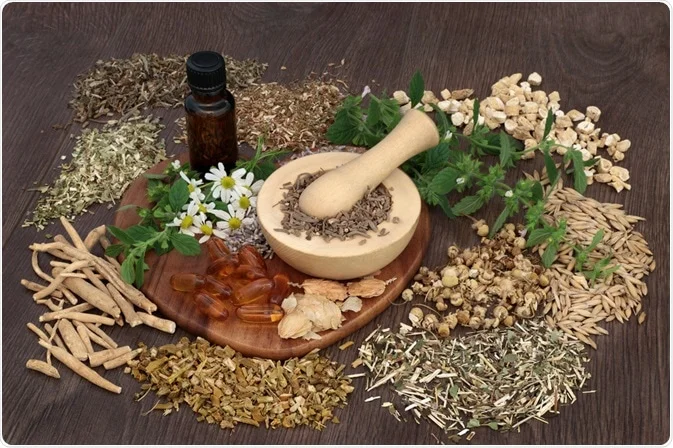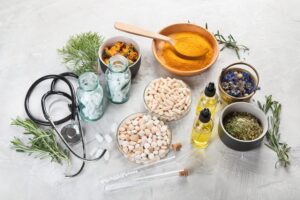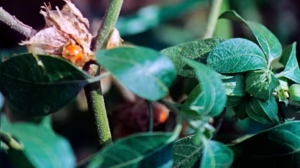Over centuries, plants have been humanity’s trusted allies in health and wellness. Before pharmaceutical giants dominated, people turned to herbs, roots, flowers, and essential oils to heal the body, mind, and spirit. Today, there is a resurgence of traditional plant-based remedies as more individuals seek natural solutions that have proven their effectiveness over time.
Are you curious about which remedies continue to yield results and how to incorporate them into your wellness routine? This guide explores enduring plant-based remedies, backs them with science, and provides actionable tips to use them safely and effectively at home.
Nature’s Medicine Cabinet: Timeless Plant-Based Remedies
Throughout history, plants have addressed ailments ranging from indigestion to anxiety. Here are some key herbs and their renowned uses:
1. Echinacea
Famous as an immune booster, echinacea is often used to shorten the duration of colds and support respiratory health.
- How it works: Packed with antioxidants and alkamides that support immune function.
- Popular uses: Echinacea tea or capsules during flu season.
2. Ginger
A universal remedy, ginger is known for soothing nausea, reducing inflammation, and aiding digestion.
- How it works: Contains gingerol, renowned for its anti-inflammatory and antioxidant properties.
- Popular uses: Ginger tea for nausea or fresh ginger in cooking for daily health boosts.
3. Lavender
An iconic relaxant, lavender soothes stress and promotes better sleep.
- How it works: Lavender contains calming compounds like linalool, which interact with the nervous system to reduce anxiety.
- Popular uses: Lavender essential oil for aromatherapy or lavender tea for evening relaxation.
4. Tea Tree Oil
A go-to for skin care, tea tree oil is antimicrobial and combats acne, athlete’s foot, and dandruff.
- How it works: The terpinen-4-ol compound fights bacteria and fungi.
- Popular uses: Dilute tea tree oil with a carrier oil and apply directly for skincare needs.
5. Calendula
Known for its anti-inflammatory and wound-healing properties, calendula is the hero of natural skin remedies.
- How it works: Its flavonoids and linoleic acid support tissue repair and reduce swelling.
- Popular uses: Calendula-infused creams or teas for skin irritation.
The Science Behind Traditional Remedies
Why do these remedies work? The effectiveness often lies in their active compounds. For example:
- Gingerol in ginger reduces inflammation and soothes nausea.
- Terpenoids in tea tree oil inhibit the growth of harmful microbes.
- Flavonoids in calendula promote healing and reduce swelling.
Modern research continues to validate the efficacy of many traditional remedies and reveal the incredible complexity of chemical compounds found in plants.
How to Safely Use Traditional Remedies
While natural remedies offer a gentler approach, it’s still important to use them safely. Here’s how:
- Start Small
Introduce remedies gradually to check for any allergic reactions or sensitivities.
- Understand Dosages
Some herbs can be harmful in excessive doses. For instance, consuming too much ginger can lead to stomach upset.
- Use Quality Sources
Opt for organic, high-quality products to avoid pesticides or contaminants.
- Consider Interactions
Many traditional remedies, like St. John’s Wort, can interact with medications. Consult your healthcare provider if you’re unsure.
- Pregnancy Precautions
Certain herbs, such as peppermint, should be avoided during pregnancy. Always double-check if you’re expecting.
Grow Your Own Medicinal Garden
Imagine stepping into your backyard or even onto your windowsill to harvest fresh peppermint for tea or lavender for relaxation. Growing your own medicinal plants is easier than you think:
DIY Garden Tips:
- Start Small
Begin with versatile, low-maintenance herbs like basil, mint, or chamomile.
- Choose the Right Spot
Most herbs thrive in sunlight and well-drained soil.
- Harvest Regularly
Frequent pruning encourages the plants to grow fuller.
Bonus? Growing your own plants ensures you know exactly what goes into the soil and promotes sustainability.
Additional Resources for Herbal Wisdom
Looking to expand your knowledge on plant-based remedies? Try these resources:
- Books
-
- “The Herbal Medicine-Maker’s Handbook” by James Green
- “Encyclopedia of Herbal Medicine” by Andrew Chevallier
- Courses
-
- Online herbalism classes from the Herbal Academy.
- Communities
-
- Join local gardening groups or herbalist workshops for hands-on learning.
Quick Reference Chart
|
Plant Remedy |
Key Benefits |
Best Use Method |
Precautions |
|---|---|---|---|
|
Echinacea |
Immune support |
Tea/Capsules |
Avoid if allergic to daisies. |
|
Ginger |
Digestive aid, anti-inflammatory |
Tea/Cooking |
Limit if on blood-thinning meds. |
|
Lavender |
Calms anxiety, improves sleep |
Essential Oil/Tea |
May interact with sedatives. |
|
Tea Tree Oil |
Antimicrobial for skin issues |
Topical |
Never ingest directly. |
|
Calendula |
Reduces inflammation, heals skin |
Cream/Tea |
Test for reactions on sensitive skin. |
Your Journey Back to Nature
Traditional plant-based remedies bridge the wisdom of the past with the demands of modern life. Whether you’re seeking to calm your mind, soothe a sore throat, or relieve skin irritation, plants offer powerful and natural ways to heal and thrive.
Looking for simplicity and sustainability in your self-care routine? Start small, try a few remedies, and see what works best for you. Rediscover the power of plants and make them a part of your everyday wellness.




